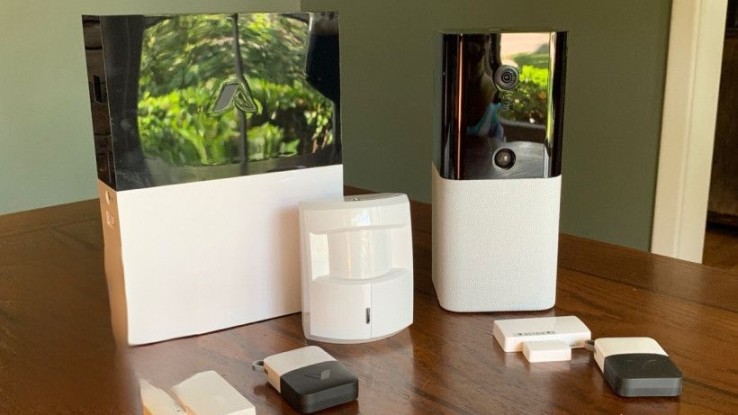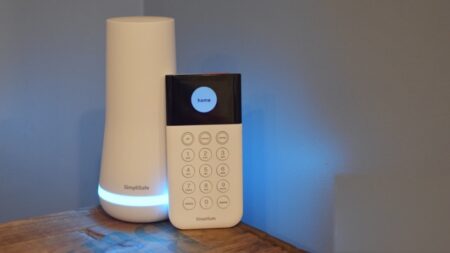UPDATED: A solid security system that works with Alexa, Google, and HomeKit
For an integrated, affordable DIY smart home and security system, Abode is an excellent choice. Its Gateway (2nd gen) will suit most homeowners, whereas apartment dwellers might find the Iota all-in-one a better fit. With either option, no contracts, no required monthly fees plus Alexa, Google, HomeKit, Zigbee and Z-Wave compatibility make this system a standout in the space. We also love the option of short-term monitoring for holidays or weekend trips but we're disappointed that you have to now pay for smart features that were free and we'd like to see more camera options.
Pros
Cons
If you’re looking for a DIY smart home security system your options have never been better. But if it’s the “smart” part of a smart home security system that’s important to you, then the Abode Smart Security system should be top of your list.
Abode’s smart integrations are the most robust on offer and, with the recent addition of HomeKit support, as well as Alexa Guard Plus integration, it’s a top choice among the DIY security systems.
With the likes of Nest Secure, the 2nd-gen Ring Alarm, SimpliSafe and the new Blue by ADT, the smart home security system market has never been so healthy.
But Abode stands out for a number of reasons, which you’ll find out more about in this updated review.
Budget option: Abode Cam 2 review
We originally reviewed Abode last year but we’ve revisited it because of a number of key new features. Also, great news for Brits – the system is now available in the UK, as well.
With Abode, there are no required monthly fees, it’s compatible with Alexa, Google Assistant, IFTTT and HomeKit, and there are Z-Wave and Zigbee radios built into the system.
Traditional brand, new smarts: Blue by ADT security system review
Add in that it’s a top-notch security system with the option of professional monitoring and sleek hardware, and you’ve got a winner.
Abode has two versions of its security system, the Essentials Gateway (2nd gen) and the Iota. Both come bundled in a starter kit, and the two hubs are identical under the hood packing 4G cellular radios, Z-Wave and Zigbee, plus six-hour battery backup, and a microSD card.
New version: Abode Security Kit review
The main distinction is that Iota has a smaller, slimmer form factor, a built-in camera with motion sensor and can work off Wi-Fi (the Gateway needs an Ethernet connection).
Currently the Iota is only available in the US, but the Gateway is on offer in the UK. We tested out both for this review. Read on to find out how this smarter home security system performs.

Abode Security System: Design, installation & setup
Abode’s design aesthetic is sleek, shiny black and white boxes. The Gateway, which is more likely to end up in a cupboard as it doesn’t have a camera, is quite large and angular, but a nice change from your basic white box.
The Iota, which includes a camera and is therefore more likely to be placed somewhere you’ll see it, has a more modern look, dispensing with all plastic in favor of that trendy fabric mesh on its bottom half. The top half is shiny black plastic, however, and the device is about half the size of the Gateway.
Installation and setup are super simple. Plug the main hub (Gateway or Iota) into power, connect the ethernet cable to your router, and download the Abode app. Once you’ve signed up, enter the activation key that comes with the device and pair the included sensors to the system.
Both Gateway and Iota come with a key fob and and one door/window contact sensor. The Gateway also includes a stand-alone motion sensor (Iota has one built in).
Mounting the devices was easy. The door/window sensor is small and slim and pre-fitted with double-sided tape velcro mounts, making it easy to remove the device without taking the paint off (great for renters), while the motion sensor has pre-affixed double-sided tape that makes it easy to mount in a corner or on a wall.
The Abode app includes tips on where to install motion sensors to best catch motion and avoid pets triggering them.
We quickly realized that to secure our whole 2,500 square foot home, with three exterior doors and two floors, we were going to need more sensors. The starter pack only comes with one contact and one motion sensor, a lot less than rival Ring, and unless you live in a one-bedroom apartment you’re going to need more gadgets.
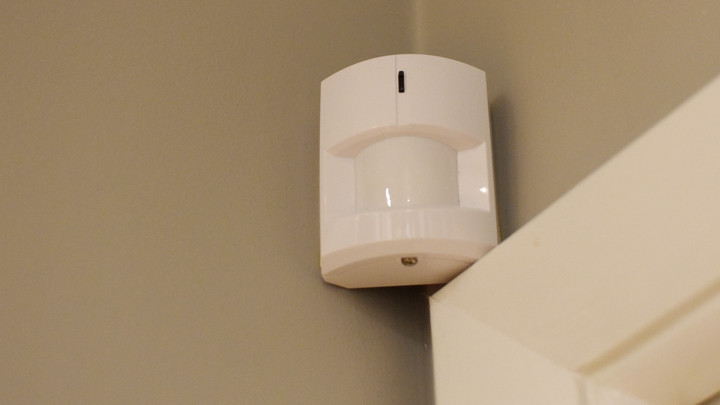
You can custom build a system on Abode’s website or choose from some larger packages, but door/window sensors cost $38 and motion sensors $55, so it can get expensive quick.
On the plus side, Abode has a wide range of security devices – and lots of seasonal sales – including different models of motion sensors (even one with a camera built in), two glass break sensors (acoustic and vibration), a water leak sensor, smoke alarm monitor, indoor and outdoor sirens, a panic button, and a system status indicator, plus a variety of different sizes and shapes of door/window sensors, so no ingress need be left unprotected.
The only difference when installing the Iota hub is that you can choose to switch it over to Wi-Fi so you can place it anywhere you want in the home, while the Gateway has to be connected to a router. In all it took about 10 minutes to set up and install each system.
During setup you are prompted to invite other members of your household by email. You’ll want do this to take advantage of Adobe’s automatic arming and disarming feature. You’re also asked to choose a monitoring plan.
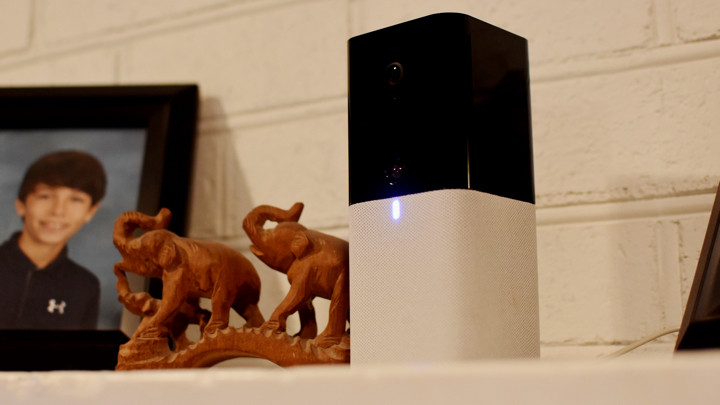
Abode Security System: Monitoring plans
Sadly, Abode’s plans aren’t quite as good a deal as they once were. While you can still operate the system for free – including arm and disarm it from the app, receive notifications, view live video, and integrate it with Alexa, HomeKit et al, you don’t get access to what Abode calls its “smart home features.”
These include accessing the activity timeline, running and automations, and using geofencing to arm and disarm when you leave or come home (for more on these jump to the Feature section).
To get these capabilities you have to pay for the Standard Plan ($6 a month or $60 a year) or Pro ($20 a month/$200 a year, or $100 for your first year).
With Pro you get the addition of cellular connectivity and professional monitoring, plus 30 days of video storage and event history.
On the Standard plan you can add on-demand monitoring for three days or seven days and you get 7 days of video storage and event history. Abode guarantees this pricing for the life of your system.
While it’s more expensive than free, it’s still one of the cheapest options in this space and there are no long-term contracts or commitments, you just pay month-to-month.

Abode Security System: Features
Abode has most of the features you’d expect from a DIY home security system. Home, Away, and Standby modes are your main functions: Home activates all the perimeter sensors, Away every sensor, and Standby turns the system off.
To change the mode manually you can use the key fob, the app, or voice control (Alexa, Google, and Siri). There is also an optional keypad that has a built-in motion sensor, backlit buttons, and a magnetic mount.
The app has a log of activity (when doors or windows were opened or closed, when the system was armed, clips from any security cameras etc.) so you can monitor your home’s status wherever you are.
If any sensor is triggered while the system is armed, the hub emits a 93dB siren and sends you an alert (push notification for free, email as well if you pay for a plan). If you have professional monitoring the alert comes with the option to notify the police or disable the alarm.
It also sends a link to the professional monitoring service, with access to your timeline and a live feed of any video. This “visual verification” can help in getting emergency services dispatched more quickly.
Beyond security, Abode is also a decent smart home hub (more about this in a bit), and is compatible with a wide range of popular products, plus you can connect up to 160 Zigbee and Z-Wave devices to it – including locks, lights and sensors.
Additionally, the proprietary abodeRF radio the sensors use has a range of 1,000 feet, much further than most systems we’ve tested, so even in larger houses you should be able to get a reliable connection between sensors and hub without needing a mesh network or extenders.
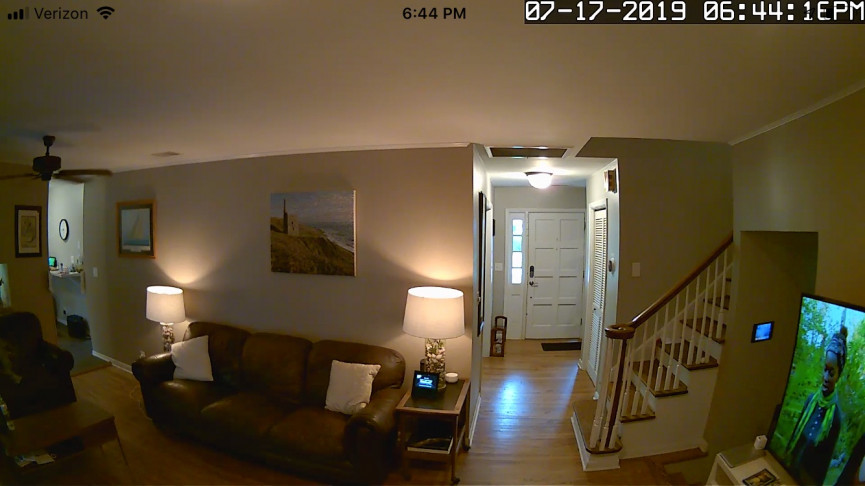
Abode Security System: App & everyday use
As a security system Abode is a breeze to use. You can arm or disarm it with voice (Alexa/Siri/Google), a keyfob (included), a keypad (extra) or with set schedules and geofencing (these require a paid plan). This covers all your bases so you never have to worry about accidentally setting it off. Abode is one of the only systems to offer all these options.
A newly overhauled app features a clean, simple interface with all the functionality in one place, plus you can also control your system from the web. When you open the app, you see the status of your system at glance, with Away, Home and Standby at the top – with the mode you’re in highlighted.
Any “Quick Actions” you’ve set up are just below (these are like shortcuts to frequently performed tasks), followed by a live stream of any Abode cameras you have. You can swipe right to trigger an audible alarm or a silent alarm – both of which will contact the monitoring center and alert any other users you’ve added to your system.
Tabs at the bottom of the screen take you to your timeline of activity, a list of all your devices, your Cue Automations and a history of alarm activations.

It’s the CUE automations that makes this system “smart.” These are If This Then That-style automations that let you tailor the system to your lifestyle. They used to be free but with the new plans you need to pay $6 a month or $60 a year to use them.
Some we set up that we found useful were automatically arming the system at 10pm and disarming it in the morning (you can also use sunset and sunrise). A cool feature here is that you can add conditions, such as don’t arm if one family member isn’t home yet.
Our favorite CUE automation is arming the system when all family members have left using geofencing, and then a second automation to disarm it when someone returns home. This worked really well in testing, despite us having spotty service at our home. Again, you need to have the Standard Plan or higher to use this feature.
These CUE automations can also be used to control smart home devices. If you add lights, locks, and other gadgets you can then create automations that turn off all the lights and lock the door when you leave the house. All of this makes Abode a decent smart home hub, although it’s first and foremost a security system.
We were impressed with the quality of the Iota system’s built-in 1080p camera. Its wide-angle field of view captured parts of four rooms in our open plan space and two-way talk was crisp and clear. The addition of a motion sensor makes the Iota a good all-in-one security system.
However, we’d like to be able to set motion or activity zones, plus put that microphone to further use as a smoke alarm and glass-break detector to provide more all-in-one functionality..
While the Iota has a built-in camera, the Gateway system doesn’t have a compatible camera, and since Nest integration went away when Google killed its Works With Nest program, there aren’t any easy options for integrating other cameras with the system. There are also no compatible video doorbells.
Abode did announce a new outdoor camera at CES this year, which looks very promising. A wired camera, it has 1080p streaming, facial recognition, and can work as a doorbell camera too as it can be wired it to existing doorbell wiring. We’ll update this review when we get a chance to test it.

Abode Security System: Smart home integrations
We’ve touched on Abode’s ability to act as a smart home hub, and it covers a lot of the essentials when it comes to setting up a smart home.
You can connect your Ecobee thermostat, Bose and Sonos smart speakers, LIFX and Philips Hue lighting (although you have to give up your Hue hub for that integration to work), locks from Schlage, Yale, and Kwikset, plus Danalock and August locks (Z-Wave versions only).
There’s a slew of compatible Z-Wave and Zigbee switches, light bulbs, sensors and more, plus it works with First Alert Z-Wave smoke alarms (although they don’t integrate with the professional monitoring). Once these devices are connected to your system you can control them all through the Abode app, as well as add them to automations.
The biggest omissions here are no compatibility with Ring or Nest devices, but if you’re in those ecosystems you’ll want to look at their own security systems.
Abode will work Alexa, Google, and Apple’s HomeKit ecosystems for free, something no other DIY system that also has professional monitoring currently does. This lets you control your system via voice and use its sensors and cameras within those smart home systems if you prefer. It also has an IFTTT channel.
With HomeKit integration you can control your system entirely through the Home app, including setting up automations and geofencing to arm and disarm, and view video (no HomeKit Secure Video though). With HomeKit you essentially get all the benefits of the paid-for Abode features without having to pay.
All your Abode motion sensors, window and door sensors and cameras will show up in HomeKit, allowing you to add them to automations and scenes. You can also use Siri for voice control.

With Amazon’s Alexa you can arm and disarm the system by voice (after you’ve set up a voice pin), and use voice to control any devices connected to your Abode system – including Z-Wave and Zigbee devices.
So if you have a Z-Wave lock paired to your system, you can lock it by voice, and set up a nighttime routine with Alexa that locks your doors, arms your system, dims your lights, and starts playing soothing music when your front door sensor is closed after 10pm.
You can also view footage from any Abode cameras on your screen-enabled Alexa and all your Abode sensors will appear in your Alexa app, so you can use them as triggers for Alexa Routines – an excellent integration.
Another bonus here is that Abode works with Alexa’s free Guard service and the newly announced Alexa Guard Plus. You need to be on the Pro plan for this feature, but it adds monitoring for footsteps and doors closing in addition to the sound of smoke alarms or glass breaking, and when triggered can connect you directly to Abode’s professional monitoring center.
Plus, when it goes live later this year (US only), you’ll be able to ask Alexa to connect you directly to Abode security agents by saying, “Alexa, call for help.”
With Google Assistant you can use Google voice control to arm and disarm your system using a voice pin code and view live feeds of your Iota camera on Google smart displays or Chromecast-enabled TVs, plus directly in Google’s Home app.
Google doesn’t support triggering routines with sensors yet, but you can still set them up to be triggered by voice or time of day and you can ask Google things like “Is my Front Door sensor closed?”.


